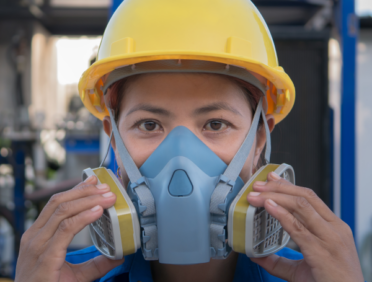The Health and Safety at Work Act 1974 is considered to be the main piece of legislation which is responsible for workplace health and safety in businesses across Great Britain.
This works in conjunction with a handful of other minor regulations to help manage health and safety in the workplace in a safe, practical way. Despite what many businesses naturally assume, implementing these regulations in the workplace doesn’t have to be time-consuming, expensive, or intimidating.
The health and safety at work act 1974 is sometimes referred to as the HSW, HASAW 1974, or simply the HASAWA; it is an act that was created by parliament, which clearly outlines and explains how to manage health and safety in the workplace for businesses in the UK.
This act is explaining the general requirements and duties of everybody from the employers to the employees, right the way through to maintainers of the work premises, as well as owners and managers.
However, it is important to understand that there is also further legislation that is specific to business sectors that work in an industry where the risk is much higher. This includes businesses that work in construction or with chemicals. The health and safety act itself is a fundamental piece of legislation that has been created by the government. Any regulations which have been designed to work in conjunction with this act are known as statutory instruments. They refer to anything that may be essentially a second piece of legislation that might also get referred to as delegated legislation in certain documents.
It is important to understand that the statutory instruments are designed to make small additions, changes or updates to existing pieces of legislation without having to completely rework them.
Underneath the health and safety at work act, there are four primary sections that people need to be aware of. These are sections which employers need to keep in mind because they directly correlate to how health and safety measures are designed and implemented.
Let’s take a look at the main aspects which apply to employers because this will directly govern how employers design health and safety regulations.
Section 2 of the act will put a duty on employers to make sure that they can ensure, so far as is reasonably possible, the health and safety of every employee who is working at the business at any given point.
Section 3 outlines that employers have a responsibility, so far as is reasonable, to make sure that they guarantee the health and safety of non-employees who might be affected by their work. This includes people like visitors, contractors, and the general public.
Section 7 of the act clearly outlines that employers have a degree of responsibility to take care of both themselves with regard to health and safety, but they must also help to protect the health and safety of anybody else who works for them. These rules also apply to anybody else who might be affected by the business on a day-to-day basis.
Section 33 of the act puts a duty on senior managers and directors within a company. It stipulates that if criminal activity has been committed by the company, and it is with either their consent, connivance or simply down to their neglectful performance, they can be prosecuted.
All of these sections are applicable to businesses in England, Northern Ireland, Wales, and Scotland.
As an employer, you have some general duties which are laid down as part of the act. Let’s talk about them.
The first part of the health and safety at work act has been designed to regulate workplace safety for welfare. The aim of the act is to safeguard people from the risk of ill health or injury by doing several things.
It has been designed to ensure the safety of employees’ health, safety and other welfare while at work. It is meant to protect non-employees from the overall risk of health and safety risks which might emerge as a result of workplace activities and is also concerned with keeping and controlling highly flammable, dangerous or explosive materials.
The duties laid down in the health and safety at work act 1974 are clearly applicable to everyone in the workplace with only a few limited exceptions.
This means that the first section of the act is applicable to employers, employees, self-employed individuals, anybody who is in control of a non-domestic property, manufacturers and suppliers of substances or provisions needed for business, as well as other providers.
The act also provides for various health and safety regulations, as well as codes of practice, to be properly created. It also gives the health and safety executive or inspectors from the local authority full permission to enforce health and safety laws in the workplace.
Under the act, inspectors from the local authority are given extensive power and can perform various tasks. They can serve enforcement notices to businesses in the form of improvement or prohibition notices, and they can bring prosecutions to local businesses for any health and safety violations.
Practically speaking, the health and safety at work act also puts a duty on the employers to make sure that health and safety are maintained in the workplace, as often as possible, but only as is reasonably practicable on an everyday basis.
Health and Safety at Work etc. Act 1974
So, let’s explore the health and safety at work act in more detail.
This is a vital piece of legislation that was introduced in 1974 for all workplaces in the United Kingdom. It has been created to make sure that every employer can provide safe and sensible working, as well as look out for the overall health and well-being of their employees in the place of work they are in.
The act has been created not only for the well-being of permanent staff but also makes provision for temporary, casual, and self-employed workers. It also makes reference to the protocols required for visiting members of the public.
While the health and safety act 1974 is an extensive piece of legislation, it can be distilled into six key points.
The act outlines that employers have a responsibility to provide a safe place for staff to work. This act covers key regulations like making sure the premises are up to standards and takes into consideration things like waste management, fire, safety, cleanliness, and handling of harmful substances. The typical company works with different roles to specialist companies, like those who work in medical labs or construction sites.
The act says that employers have a responsibility to provide safe equipment to workers. This means that any equipment which is used in the workplace, from specialist machinery to a computer, needs to be maintained properly and looked after to make sure that it is safe to use. Employers are responsible for regular safety checks, as well as appointing somebody to conduct those checks to make sure that the equipment is still working.
Employers have a responsibility to make sure that they train staff to be capable of working in the business. Not only do staff need on-site training to work with machinery and the tools used in the business, but they should also receive general health and safety training, like fire safety or manual handling.
The typical employer has a responsibility to carry out risk assessments. Risk assessments are a core part of keeping the workplace safe on a regular basis. The risk assessment allows employers to identify areas of risk and then create proper preventative actions to stop these risks from becoming widespread. Risk assessments need to be properly documented, and preventative measures need to be put in place where necessary, so far as is reasonably possible within the workplace.
Employers have a responsibility to provide proper facilities for staff. These facilities include things like toilets, heating, clean drinking water, and air conditioning. If the business has kitchen facilities, then any appliances that are used in these facilities need to be maintained and checked on a regular basis. Employees have their own responsibilities when it comes to these areas, making sure that they participate in health and safety.
Finally, employers have a responsibility to appoint somebody to oversee health and safety in the workplace. You are directly responsible for appointing a dedicated individual who is responsible for carrying out health and safety duties, as well as making sure that they are met and completed by staff. This individual would be required to do things like submit routine safety inspections, work with safety representatives, and help manage daily operations. They also need to be adequately compensated for these responsibilities.
The manual handling operations 1992 are designed to make sure that manual handling is done in a safe way. Manual handling is defined within the regulations as follows:
“…any transporting or supporting of a load (including the lifting, putting down, pushing, pulling, carrying or moving thereof) by hand or bodily force”.
The item in question can be either a person, object or animal. The regulations clearly outline how to deal with the risks that come from manual handling, and these have been broken down into three different steps.
First of all, a business should avoid hazardous manual handling practices so far as is reasonably possible in the workplace. Secondly, they should identify any hazardous operations that can’t be avoided in the workplace, and finally, they need to reduce the risk of injury as far as is reasonably possible in the workplace.
The Reporting of Injuries, Diseases and Dangerous Occurrences Regulations (1995), known to many as RIDDOR, puts a responsibility on any person given to be in charge of a workplace. This can be an employer, self-employed person, or any other relevant party.
These individuals have a responsibility to report serious accidents in the workplace, as well as diseases (occupational) and dangerous situations (even ones that nearly happen).
The Health and Safety (Display Screen Equipment) Regulations 1992 are specialist regulations designed and created to help with the rise of screens in the workplace and were amended in 2002. The regulations were created to make sure employers strived to minimise the risks that came from VDU and Keyboard work by ensuring that workplaces and jobs were well-designed.
All working hours in the UK are governed by the working time regulations 1998. These regulations limit the average working 48 hours, although employees can opt-out of these regulations if they so wish. The average working day can be no longer than eight hours. These regulations also give employers and workers the right to both specified rest breaks and paid leave.
The health and safety at work regulations 1999 are created for employers. These regulations outline the specific responsibilities employers have within the workplace. These responsibilities are to carry out risk assessments for health and safety purposes and implement necessary changes to protect workers, arrange for appropriate training and dissemination of information, and to appoint individuals to act as health and safety representatives in the workplace.
In the world of health and safety, the management of health and safety at work regulations 1999 is very important. These regulations govern how health and safety risks are managed and identified within the workplace, and it is a very important part of everyday business. Employers are responsible for introducing risk assessments into the workplace and implementing control measures to prevent hazards from occurring, but they only have to do so as far as is reasonably practical.
The use of nanomaterials in an occupational setting is governed and regulated by the control of substances hazardous to health act 2002, known to some as COSHH. This is the law that requires employers to safely control substances that are considered to be hazardous to health and including nanomaterials.
As an employer, you can reduce or prevent your worker’s exposure to hazardous substances by identifying what the health hazards are, deciding what measures need to be brought in to prevent any risk to health through a risk assessment, and providing these control measures to reduce the risk of hazards in the workplace, making sure that all control measures, making sure that all control measures are maintained, providing clear, instruction, training, and information for riding, monitoring and health surveillance resources, and planning for emergencies in the workplace.
The bulk of businesses use substances which are mixtures of chemicals together. These can often cause harm to other people, so it’s important to make sure that a proper risk assessment is filled out. In the event of new technology or chemicals being created, the guidance recommends a precautionary approach, focusing on creating control strategies designed to reduce the risk as much as possible.
The equality act 2010 was introduced to create a more equal, non-discriminatory workplace. It introduced provisions, that banned discrimination against adults in the provision of public functions and services on the basis of age. The ban was first introduced in October 2012, and now it is unlawful to discriminate against somebody on the basis of age, with only a handful of exceptions noted in the act.
The health and safety at work act 2015 has also been known as the deregulation act of 2015. It is an act of parliament which was passed that is designed to make provision for the reduction of burdens that result from for businesses, or other organisations, to make provision for the ocean, which no longer has any practical purpose, and to make a provision about the exercise of certain regulatory functions.
Your business will undoubtedly require training in health and safety to make sure that everybody is subscribing to the correct policies and that people understand what their responsibilities are as both employers and employees. Learn Q is more than happy to provide full training for your entire business in this regard, as we have plenty of experience when it comes to creating and implementing training courses. We can provide training for as many staff as you have – they will all need it.
To download a .pdf of this blog, please click here












